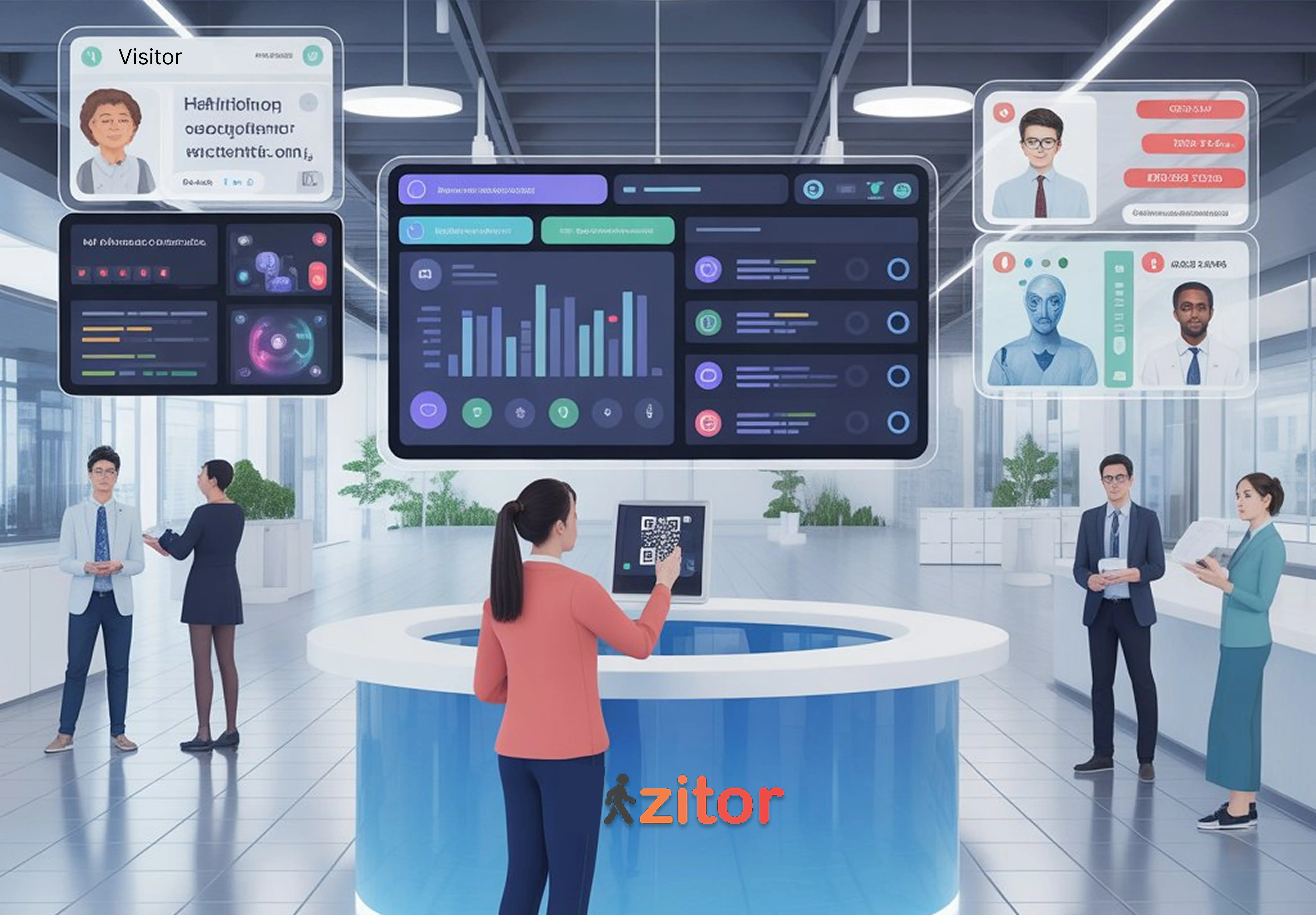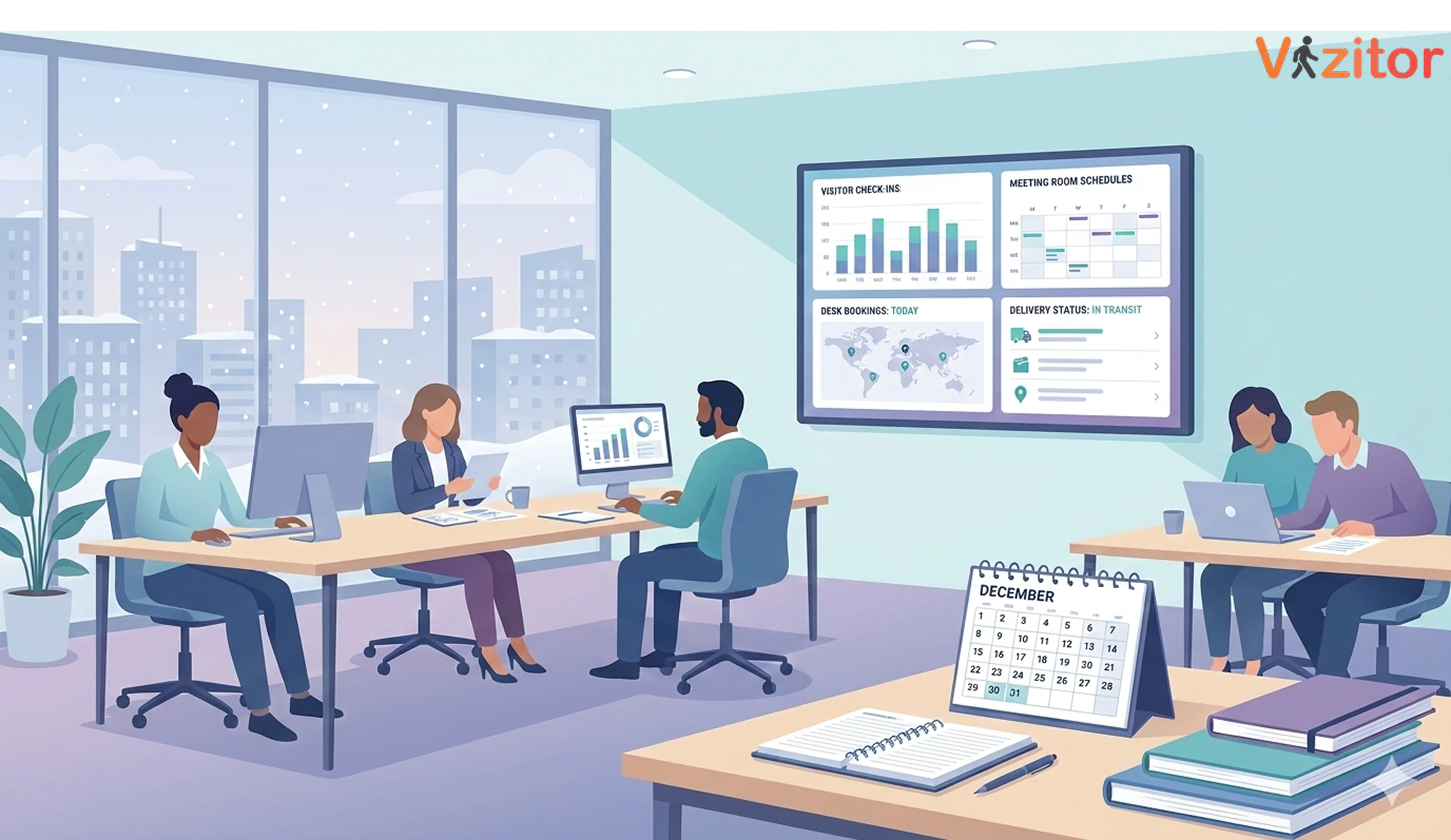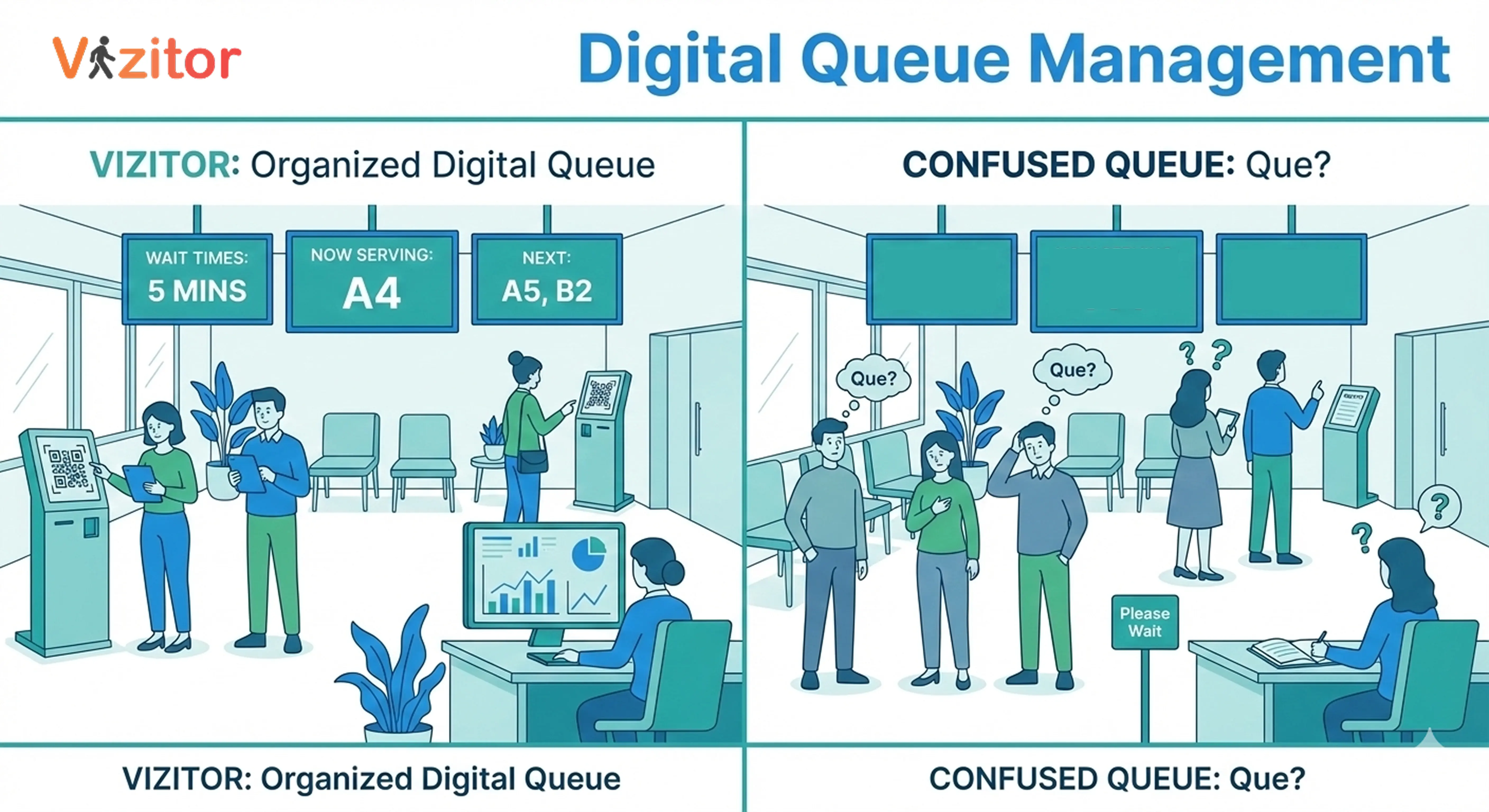The Future of Visitor Management: Top Trends Shaping 2025 and Beyond
The future of visitor management is set to be intelligent, automated, and immersive. Emerging trends include AI-driven predictive analytics, multimodal biometrics, AR/VR visitor experiences, IoT-connected smart spaces, blockchain-based identity verification, autonomous reception systems, and sustainable, energy-efficient operations. These innovations will enhance security, streamline operations, ensure compliance, and provide personalized, frictionless experiences for visitors. Platforms like Vizitor, with its customizable and industry-agnostic capabilities, are poised to lead this transformation, helping organizations stay ahead in visitor management and workplace safety.
Table of Content
Try Vizitor for Free!

Published on: Tue, Sep 30, 2025
Read in 5 minutes
Introduction
Visitor management systems (VMS) have evolved far beyond simple sign-in sheets and even basic digital check-ins. As organizations prioritize security, compliance, and visitor experience, new technologies and business requirements are driving innovation in this space. In the next few years, we can expect visitor management to become more intelligent, automated, and immersive. This blog explores emerging trends that will shape the future of visitor management.
1. AI-Powered Visitor Management Systems
Artificial Intelligence (AI) is revolutionizing visitor management by automating processes and providing deeper insights. AI-powered systems can analyze visitor data to predict peak times, identify patterns, and even detect unusual behavior. This not only streamlines check-in processes but also enhances security by flagging potential threats in real-time.
Key Benefits:
- Predictive Analytics: Anticipate visitor volumes and adjust resources accordingly.
- Behavioral Analysis: Detect and alert security to suspicious activities.
- Automated Check-Ins: Reduce wait times and manual errors.
2. Biometric Multimodal Authentication
Future VMS will move beyond single-point biometric authentication. Multimodal biometrics will combine facial recognition, fingerprint scanning, and even voice recognition for higher security and frictionless entry. Benefits include:
- Virtually eliminating identity fraud
- Seamless contactless check-ins
- Integration with emergency and access control systems for instant alerts
Expect real-time facial recognition integrated with smart cameras and wearable devices in the next 2-3 years.
3. Immersive Visitor Experiences with AR/VR
Augmented Reality (AR) and Virtual Reality (VR) will enhance the visitor experience, particularly for corporate offices, museums, and campuses:
- AR-guided navigation: Visitors can be guided to meeting rooms or points of interest via AR on their smartphones
- VR onboarding experiences: Pre-arrival orientation for new employees or external guests in immersive virtual environments
- Interactive dashboards: Hosts can monitor visitor flow and engagement through AR-enabled tools
This trend combines experience personalization with operational efficiency.
4. Smart Integration with IoT-Enabled Spaces
The next wave of visitor management will leverage IoT sensors, smart badges, and connected devices:
- Smart badges that detect location, meeting schedules, and even employee interactions
- Environmental sensors adjusting lighting, HVAC, and desk availability based on visitor presence
- Real-time occupancy tracking for compliance, energy savings, and optimized workflows
IoT integration allows for context-aware visitor management, where the system anticipates and responds to visitor needs dynamically.
5. Blockchain-Based Visitor Identity Verification
Blockchain is expected to revolutionize secure identity verification in visitor management:
- Immutable visitor identity records that cannot be altered
- Privacy-first authentication with decentralized verification
- Streamlined cross-organization access, useful for multi-site campuses and shared offices
Blockchain will enhance trust, data integrity, and regulatory compliance for sensitive facilities.
6. Autonomous Reception and Robotics
Expect the rise of autonomous reception systems, including AI-powered kiosks, mobile robots, and automated service stations:
- Robots greeting visitors and guiding them to meeting rooms
- Fully automated check-in and badge issuance
- Integrated security scanning and verification without human intervention
This trend focuses on efficiency, consistency, and reduced staffing burdens.
7. Advanced Predictive Security Monitoring
Future systems will combine AI, IoT, and historical visitor data to detect anomalies and threats before they occur:
- Predict potential security breaches based on visitor profiles and access patterns
- Automatically alert security teams and restrict access dynamically
- Integrate with real-time analytics dashboards for immediate situational awareness
Security will become proactive rather than reactive, ensuring safer workplaces.
8. Hyper-Personalized Visitor Experiences
Next-gen VMS will personalize experiences based on visitor history, preferences, and engagement:
- Personalized greetings, room settings, and digital onboarding materials
- Pre-configured accessibility features for differently-abled visitors
- Integration with visitor apps to allow custom schedules, agendas, and preferences
Personalization will enhance visitor satisfaction and corporate branding.
9. Sustainable and Energy-Conscious Systems
Beyond going paperless, the future will emphasize energy-efficient and environmentally conscious visitor management:
- Devices powered by low-energy IoT sensors
- Real-time energy adjustments based on occupancy
- Sustainable badges using digital-only credentials or recyclable materials
Sustainability will not only be a regulatory expectation but also a corporate responsibility metric.
10. Advanced Compliance and Audit Automation
Compliance will evolve to be predictive and automated, rather than just record-keeping:
- AI-driven automated compliance checks
- Digital audit trails integrated with government and industry standards
- Real-time reporting for multi-site, multi-region organizations
Future VMS will anticipate compliance risks and suggest corrective measures proactively.
Frequently Asked Questions (FAQs)
Q1: What does the future of visitor management look like?
The future includes AI-driven analytics, AR/VR experiences, IoT integration, blockchain identity verification, autonomous reception systems, and sustainable operations for enhanced security and efficiency.
Q2: How will AI improve visitor management?
AI will enable predictive analytics, detect unusual visitor behavior, optimize staffing during peak hours, and automate check-in workflows for a smoother experience.
Q3: Will biometric authentication become standard in visitor management?
Yes. Multimodal biometrics, combining facial recognition, fingerprints, and voice recognition, are expected to become standard for secure, frictionless entry.
Q4: How can AR/VR enhance visitor experiences?
AR can guide visitors through facilities, while VR can provide immersive pre-arrival orientations or interactive tours, improving engagement and satisfaction.
Q5: What role does IoT play in future visitor management systems?
IoT devices and smart badges allow real-time location tracking, occupancy monitoring, and environmental adjustments to optimize visitor flow and safety.
Q6: How will blockchain impact visitor management?
Blockchain ensures secure, immutable visitor identity records, simplifies cross-organization access, and enhances data privacy compliance.
Q7: Are future visitor management systems suitable for SMBs?
Yes. Platforms like Vizitor are highly customizable and industry-agnostic, making them suitable for SMBs and large enterprises alike.
Q8: How will sustainability affect visitor management?
Future systems will reduce paper use, use low-energy IoT devices, and adopt digital badges, aligning with corporate environmental goals.
Q9: Can future visitor management systems integrate with other platforms?
Yes. Integration with access control, calendar apps, communication tools, and analytics dashboards will be standard, creating a cohesive and efficient workflow.
Q10: How can businesses prepare for these emerging trends?
By adopting customizable, scalable, and technology-ready VMS solutions like Vizitor, businesses can implement AI, IoT, AR/VR, and blockchain-ready systems without disrupting current operations.
Conclusion
The future of visitor management will be intelligent, predictive, immersive, and highly secure. Businesses can expect:
- AI-driven predictive analytics
- Multimodal biometrics and blockchain identity verification
- Immersive AR/VR experiences for visitors
- IoT-connected, autonomous reception systems
- Energy-conscious and sustainable operations
Vizitor, as a highly customizable and industry-agnostic platform, is well-positioned to integrate these innovations. Organizations adopting these next-generation trends will enhance security, improve visitor experience, and stay ahead of compliance and operational challenges.
Contact Us To know more









